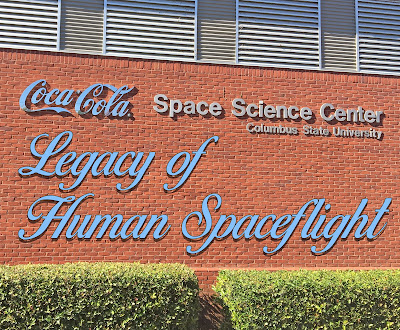I have a great deal of respect for
journalists and the independent press. I have admired journalists
since childhood, watching Murphy Brown (don't laugh) and mourning the
death of Daniel Pearl. I applaud Time Magazine's 2018 Person of the
Year: Jamal Khashoggi, The Guardians, and The War on Truth.
In college when I was Editor-in-Chief
of the student newspaper, I considered becoming a space journalist.
But I am a very slow writer and I'm not great at the objective
reporting writing style. I did get mistaken for a journalist twice at
space events in college and grad school, paying attention and taking
notes. Even now, I occasionally get mistaken for a journalist even
though I'm just an analyst who is active on Twitter.
Upon creating my own company nearly 3
years ago, I realized my freedom to represent myself and to speak my
mind had significantly increased. And not only did some people want
to hear my opinions, a few were paying me for it. This gave me
courage to create a professional goal: contribute to space news. At
the time, I didn't know if that meant I should be writing articles
myself, being interviewed, or contributing to stories in some other
way.
I had done both previously, minimally.
Once year or so I would be contacted for a story, leading to some
cool opportunities such as being interviewed at HLN studios in
Orlando for a piece on NASA's planetary science budget, being
featured in Florida Today's One To Watch, and writing an op-ed in
favor of a new Florida spaceport. I wanted to do more but I didn't
know what or how.
I signed up for a couple databases that
promote female professionals as sources, though nothing ever came
from that. I subscribed to an email newsletter Help a Reporter Out
(HARO) that sends me a list of requests for sources from reporters
three times every weekday. Requests for space sources on HARO is
rare, but I was able to connect with a few opportunities. I am not
really sure how the ball got rolling, but one opportunity led to
another and soon reporters were contacting me (usually on Twitter)
out of the blue. It helps that I follow and interact with all my
favorite reporters on social media.
I didn't realize the number of times I
had been interviewed or quoted in publications this year until I
tallied it up. In the first year of my company, 2016: twice. In 2017:
11 times. In 2018: 31 times as of today. And two interviews done this
year should be published in 2019.
I've been asked which space news
sources I follow. I highly recommend looking these individuals and
publications up:
Print
Alan Boyle, GeekWire
Anatoly Zak, RussianSpaceWeb.com
Andrew Jones, The Planetary Society &
Space News
Brian Berger, Space News
Bryan Bender, Politico
Caleb Henry, Space News
Chabeli Herrera, Orlando Sentinel
Chris Bergin, NASASpaceFlight.com
Chris Gebhardt, NASASpaceFlight.com
Christian Davenport, The Washington
Post
Doug Messier, Parabolic Arc
Elizabeth Howell
Elizabeth Howell
Emre Kelly, Florida Today
Eric Berger, Ars Technica
Irene Klotz, Aviation Week
Jacqueline Klimas, Politico
James Dean, Florida Today
Jason Davis, The Planetary Society &
Rocketgut!
Jason Rhian, Spaceflight Insider
Jeff Foust, Space News & The Space
Report
Jonathan O’Callaghan
Keith Cowing, NASA Watch & SpaceRef
Kenneth Chang, the New York Times
Kenneth Chang, the New York Times
Leah Crane, New Scientist
Loren Grush, The Verge
Marcia Smith, SpacePolicyOnline.com
Marina Koren, The Atlantic
Michael Sheetz, CNBC
Sandra Erwin, Space News
Tim Fernholz, Quartz
Podcast/Radio/TV
Anthony Colangelo, Main Engine Cut Off
Brendan Byrne, WFME Orlando & Are
We There Yet?
Carrie Nugent, Spacepod
Chad Anderson, Space Angels
David Livingston, The Space Show
Emilee Speck, News 6 WKMG Orlando
Gary Jordan, Houston We Have a Podcast
Gene Mikulka, Talking Space
Jackie Wattles, CNN
Jake Robins, WeMartians
Jim Green, Gravity Assist
Joshua Santora, The Rocket Ranch
Mat Kaplan, Planetary Radio
Michelle Thaller, Orbital Path
Rachel Crane, CNN
Rachel Crane, CNN
The Orbital Mechanics (Ben Etherington,
David Fourman, & Dennis Just)
A few weeks ago during Thanksgiving
week, I posted a thank you on Twitter to our fabulous space
journalists for the job they do and letting them know I appreciate
them and their work. The response from one journalist: we don't hear
that often! If you appreciate the space news you read every day,
thank the journalists who do the work to bring you that news.
My top three tips to help a
journalist who contacts you:
1) Say yes. It's frustrating for
journalists (and analyst) to find a source, take the time to contact
them, and have them decline.
2) Respond as quickly as you can. They
are on a deadline.
3) Recommend other sources if you are
able. Especially if you declined the interview.
Once again, thank you to those who
cover the space beat. I look forward to working with you and
reading/watching/listening to your work even more in 2019.


























